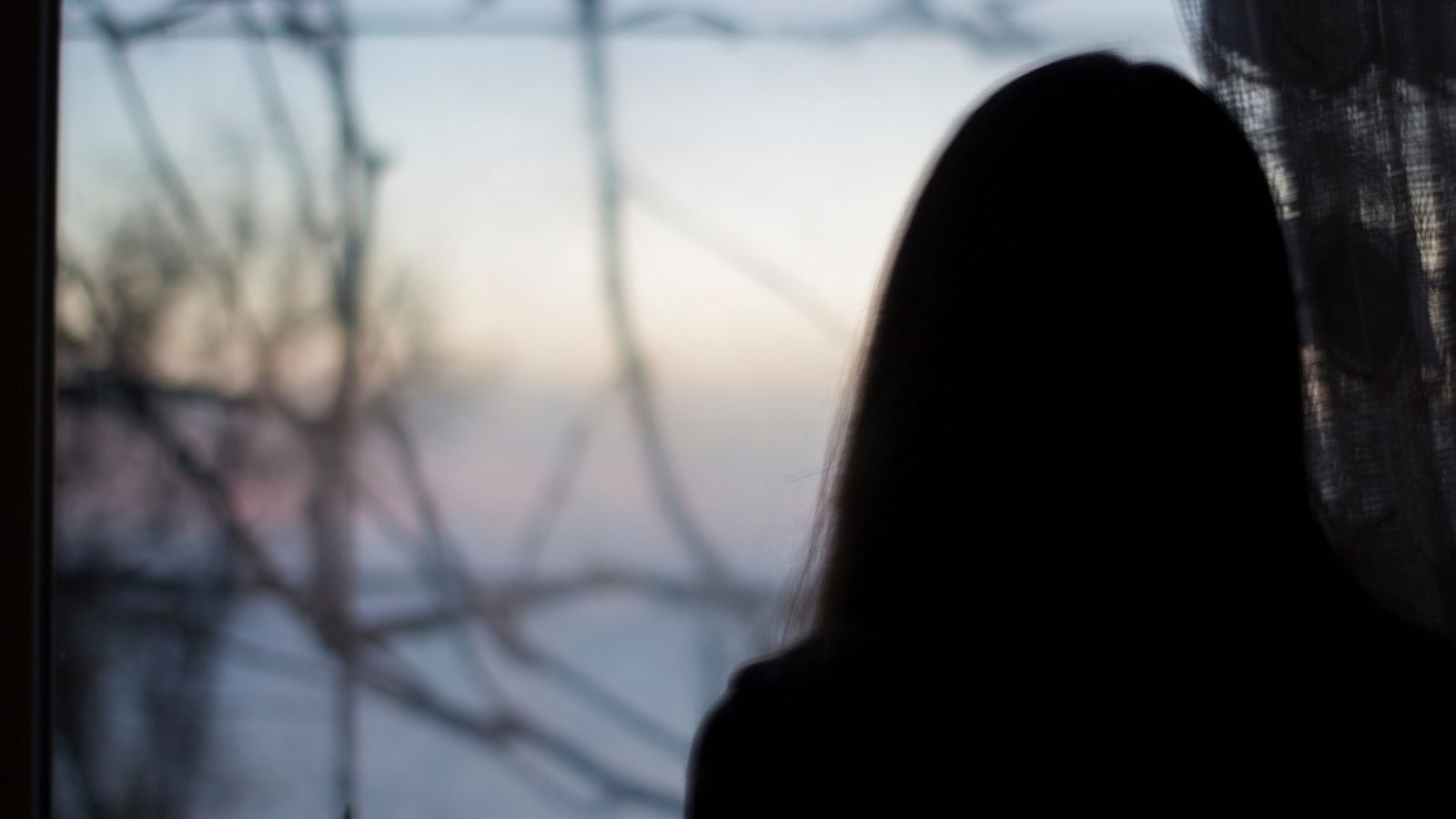At the end of October, at a remote sitting of the High Court, a case comes before the Honourable Mr Justice MacDonald – a specialist in child protection.
He is being asked to make a judgment about a 16-year-old girl who – at this precise moment in time – is at a critical point in her life.
She’s known to the court as G.
With no parents, no foster carers and no place to call home, the girl has spent most of the last few months in a long list of institutions ranging from secure units to mental health wards.
Her main goal during this period has been to take her own life, and she’s told her social worker that she intends to succeed.
The court must now decide what should happen next.
This is the troubling case of Girl G – and it reveals a lot about how we treat vulnerable children in the UK today.
“There can be no keener revelation of a society’s soul than the way in which it treats its children,” Mr Justice MacDonald tells the court, quoting Nelson Mandela.
The details of G’s troubled life are about to be laid bare – a broken family life, a childhood spent in care, a life plagued by self-harm, anger and despair.
Back in 2010, when G is four years old, she is taken into care along with her siblings. And for the next 14 years she remains with foster carers. Things start to spiral out of control when she reaches the age of 16.
In 2020, she starts to self-harm and begins to harbour thoughts about suicide. In May, the teenager is detained for nearly a month under the Mental Health Act and after being discharged is put into a secure residential placement.
But this does nothing to help the situation. G becomes violent and aggressive – often lashing out at staff and threatening to kill them.
More worryingly, she writes a total of nine letters expressing a desire to kill herself.
She is moved to a specialist mental health inpatient home – and a few days into her stay, she steals a lighter and sets fire to her mattress. The fire spreads fast, engulfing her room, and soon the whole unit has to be evacuated.
Following the fire, a team of psychiatrists decide that she does not need to be detained in a mental health ward. According to their report, she’s badly behaved – not mentally ill.
And right now, as Mr Justice MacDonald is considering what should happen next, the same group of experts decide that she should be discharged – released from the mental health ward.
And so this case reaches the Family Division of the High Court for one devastating reason: no one can agree who should take care of G.
Because of her age, she should be in a special psychiatric intensive care unit run by the Child and Adolescent Mental Health Service, or CAMHS as it is known. This is the NHS service designed to support under 18s and their mental health.
But she isn’t under their care, because CAMHS have no beds available.
This service has been in crisis mode for some time now – and there is growing evidence that increasing numbers of young people are struggling to access support from CAMHS.
G is no exception. Instead, she is being held in an adult mental health ward, run by Lancashire and South Cumbria NHS Foundations Trust. Far from ideal, the court hears.
With doctors expected to discharge G at any moment, the council says she is in “urgent need of a secure placement”. But Mr Justice MacDonald is told that that no such placement is available anywhere in the United Kingdom. Nowhere.
So here is the dilemma: doctors don’t think G should be on a mental health ward and there’s no suitable, secure placement that can take her.
In November, the Children’s Commissioner Anne Longfield publishes a report which reveals “concerning evidence” of a growing number of children who are locked up in places not designed to hold them because nothing else is available.
Please use Chrome browser for a more accessible video player
These range from B&Bs, bedsits, hostels and even caravans.
And that is exactly what is about to happen in the case of G. The only place that is available to the teenager is accommodation that is not regulated.
That means the placement doesn’t have to be inspected by Ofsted in the same way that a children’s home does, and it might have no experience at all in dealing with vulnerable youngsters.
G’s social worker does not support the move, but must concede that it is “the only option currently available”. Mr Justice MacDonald is not happy either, but knows his options are narrowing.
He sums it up like this: “G, by reason of her highly complex welfare needs, is another child who falls through the gaps that exist between secure accommodation, regulated accommodation and detention under the mental health legislation.”
Mr Justice MacDonald reluctantly orders that G is placed into unregulated accommodation.
She is driven to the location in a car with locked doors, flanked by three adults, a ratio of supervision which must be maintained 24 hours a day. All the doors at her new placement must be locked due to her past arson attacks. And wherever she goes, she must be escorted. She is put on suicide watch and checked every 10 minutes.
Mr Justice MacDonald tells the court: “The brutal reality facing the court in this case is that if not deprived of her liberty in an unregulated placement, there is an unacceptable risk that G will end her own life.”
We speak to Lancashire County Council, G’s legal guardian. Philippa Williamson, cabinet member for children, young people and schools tells us: “The welfare of G is our absolute priority.”
But the council is struggling to find a solution.
“We have continued our search for regulated placements but again with no avail due to her high level of need.”
By November, things are going from bad to worse. G is on hunger strike.
She barricades herself in her bedroom for four days. The door is blocked. No one can get in.
Suddenly, it falls silent. The staff break the door down. G has tried to take her own life.
While staff call for an ambulance, she tries to take her own life again. It is chaos. The staff cannot cope.
It is now 2 December, and the case is back before Mr Justice MacDonald. By this time, he cannot hide his anguish over this case: “As time goes on it is difficult to think of new ways to describe the stark and unacceptable position that G continues to be in.
“A vulnerable woman with multifaceted difficulties and at high risk of serious self-harm or suicide still only has available to her a sub-optimal placement that is not equipped to fully meet her complex welfare needs.”
Reluctantly, the judge has no other option but to send G back to the only place that will take her: a place ill-equipped for her needs, unregulated by the state, where she is deprived of her liberty and yet left to live whatever life she can – by a society that looks to have failed her at every twist and turn of her young life.
As 2020 ends, G’s mental state declines further. There are repeated attempts made to take her own life.
On 4 February 2021, the case is yet again before Mr Justice MacDonald.
No one has been able to find G a secure, regulated place to live.
“As I have noted, six months and eleven court hearings on from the proceedings being issued in August 2020, the position remains that there is no regulated non-secure placement anywhere in the jurisdiction able to take G.”
“The bleak reality in this case, however, is that G’s current placement continues to represent the only option for keeping G safe.”
“I am increasingly worried that, absent a suitable placement being found, it will be the sad responsibility of this court to deliver a judgment that records with respect to G a greater tragedy still.”
Anyone feeling emotionally distressed or suicidal can call Samaritans for help on 116 123 or email [email protected] in the UK. In the US, call the Samaritans branch in your area or 1 (800) 273-TALK.






















